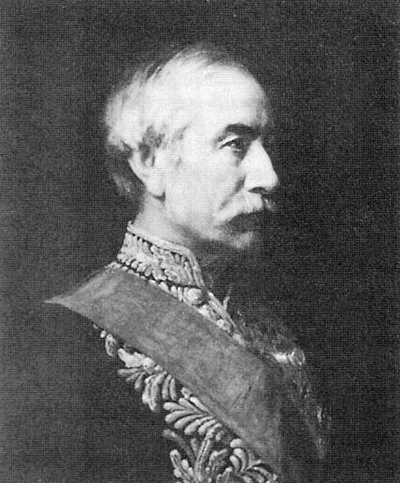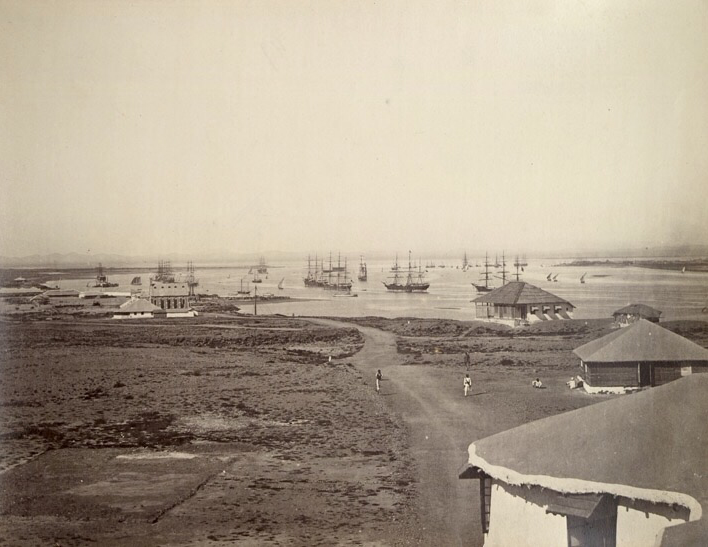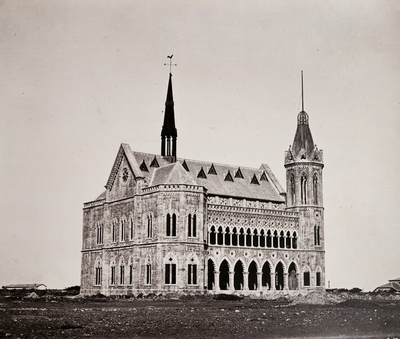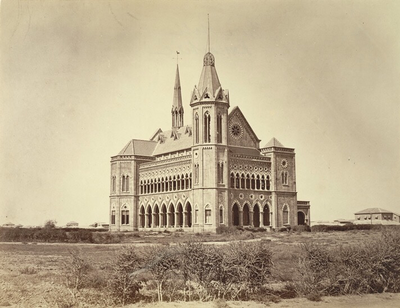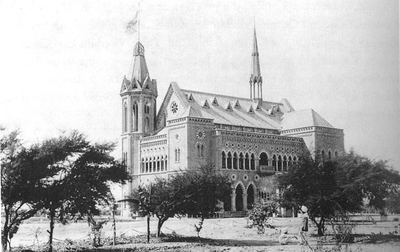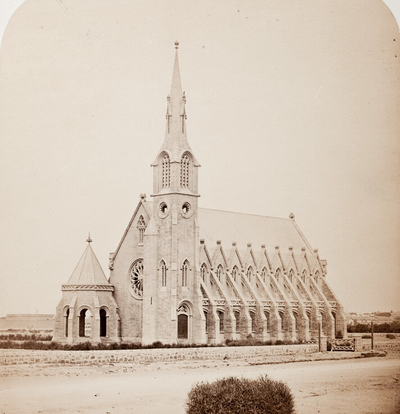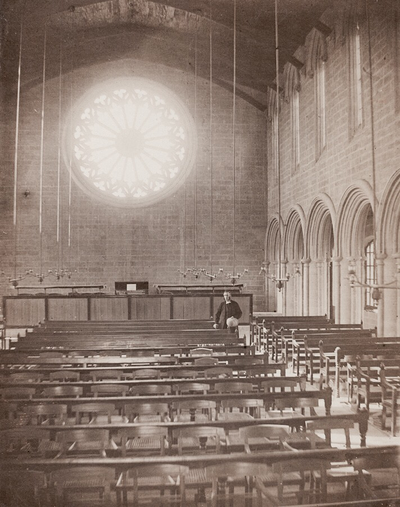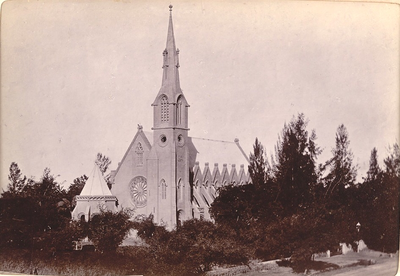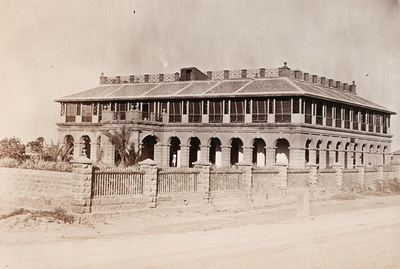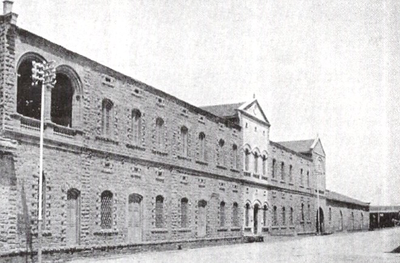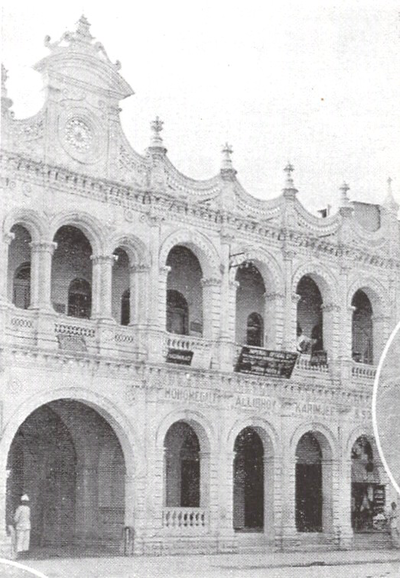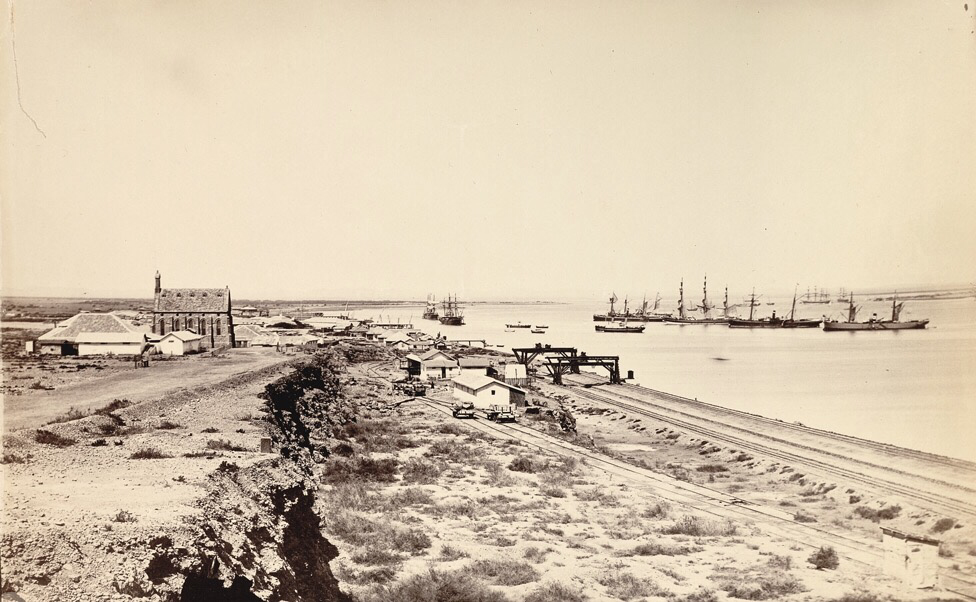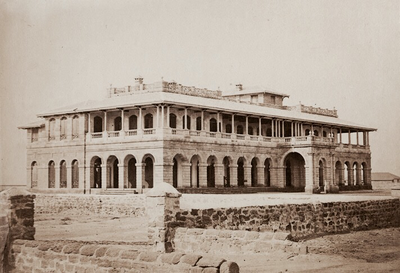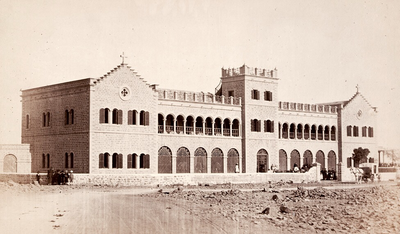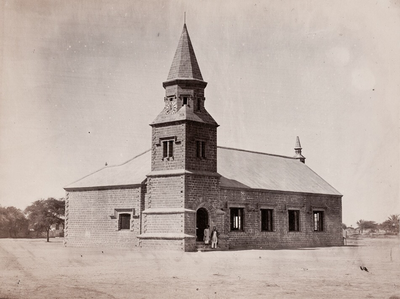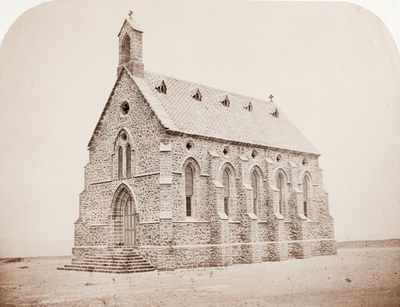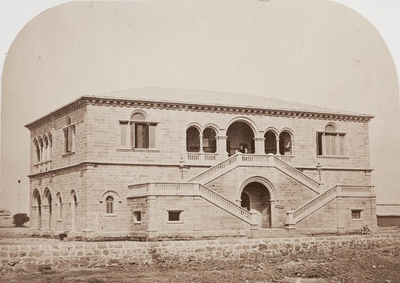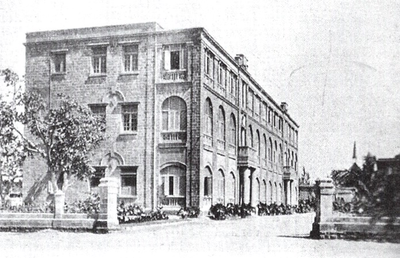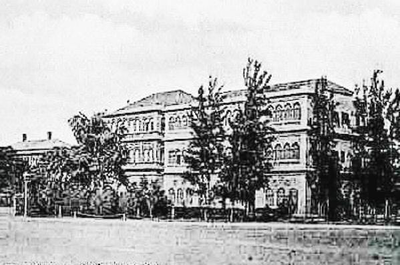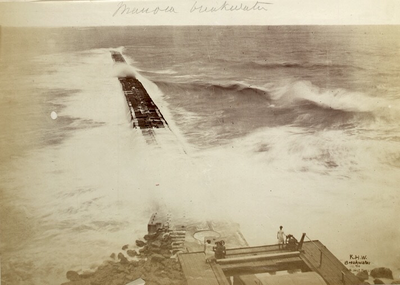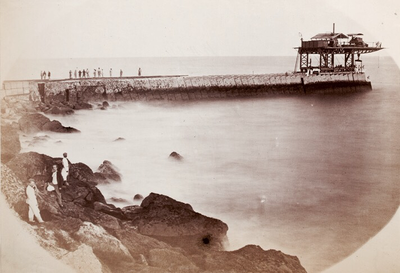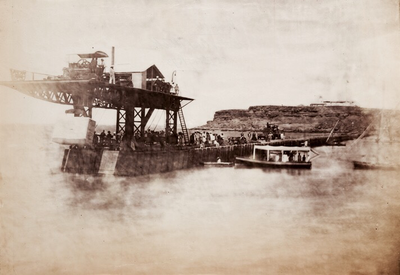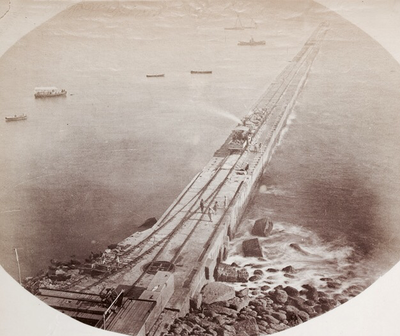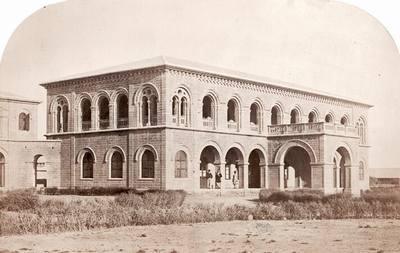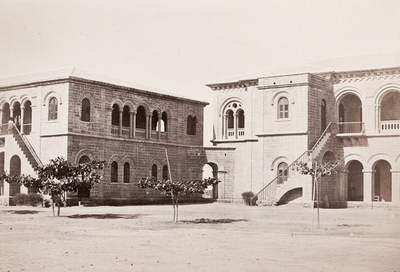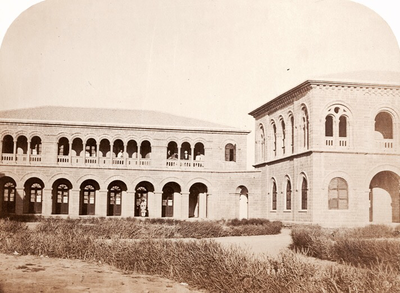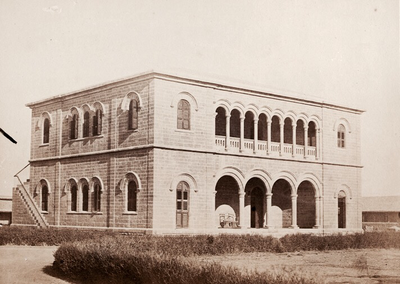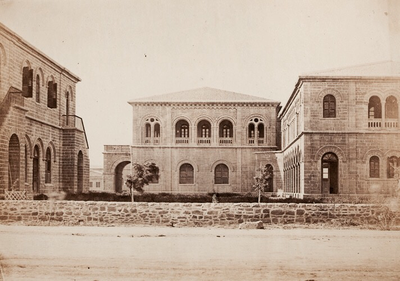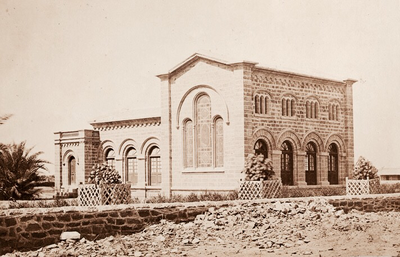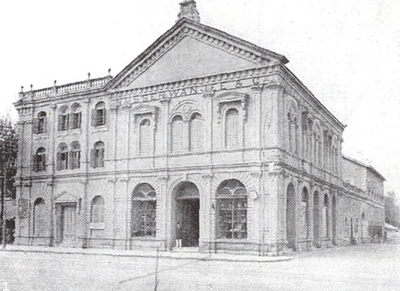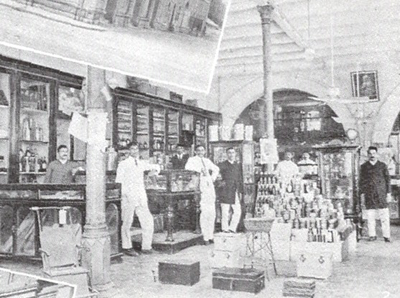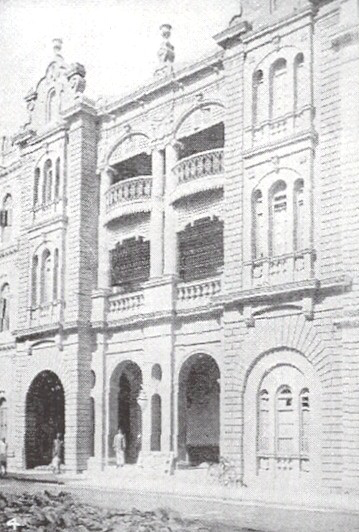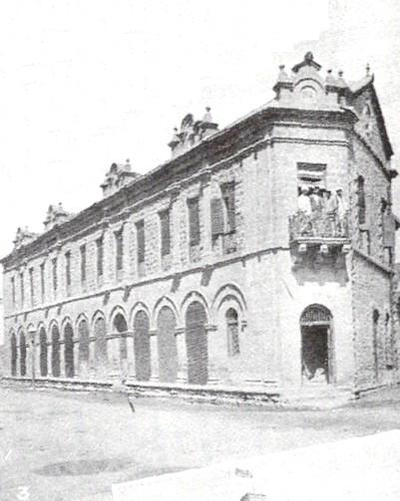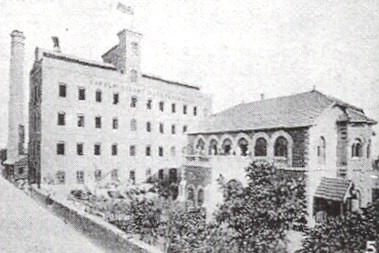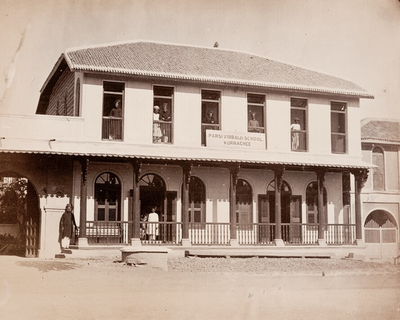BECOMING ESTABLISHED
The 1860's
In 1861, Karachi got its first railway line: a hundred mile stretch from Karachi to Kotri, a town near Hyderabad on the right bank of the Indus. In the same year, due to the ongoing American Civil War 10,000 miles away, an enormous demand for Indian cotton was created which gave birth to a brief period of unprecedented prosperity. In this time, the total trade value of the Karachi Port rose up to Rs. 6.6 corore of which, the value of exported cotton touched 80 lacs of rupees. This short period of prosperity provided for a business boom in Karachi.
In 1864, a direct telegraph connection was inaugurated which connected Karachi with London and with the interior. It was from Karachi that the first telegraph message from India was sent to England. Modernizing of the harbor commenced in 1860, and closing of the Chinna Creek and opening of the Mole were completed by 1864. By 1866-7, the government had spent about 250,000 pounds sterling on the Karachi Port. With the opening of the Suez canal in 1869, the importance of Karachi grew and it quickly became a full-fledged seaport.
Karachi was a town of considerable size now, and public buildings such as the Frere Hall were built to provide the citizenry with a place to accommodate socio-cultural activities and to act as a town hall.
Karachi was a town of considerable size now, and public buildings such as the Frere Hall were built to provide the citizenry with a place to accommodate socio-cultural activities and to act as a town hall.
Raised in memory of Sir Bartle Frere, Commissioner of Sind, 1851-1859, Frere Hall was designed by Colonel Clair Wilkins whose proposal was selected from 12 entries in the first recorded architectural design competition for a public building in Sindh.
Built in 1865 using the local yellowish limestone, the cost of its construction was covered through public donations. The building was the hub of Karachi’s social activities and also served as a Town Hall with regular public meetings, concerts and theatrical performances. Gardens were added around it by Benjamin Flinch in 1887-88.
Courtesy: British Library www.bl.uk
Built in 1865 using the local yellowish limestone, the cost of its construction was covered through public donations. The building was the hub of Karachi’s social activities and also served as a Town Hall with regular public meetings, concerts and theatrical performances. Gardens were added around it by Benjamin Flinch in 1887-88.
Courtesy: British Library www.bl.uk
Local businesses from the 1860's
THE 1870's
1873, Karachi possessed an efficient and well managed harbour. The city was expanding at a fast pace and business was booming. In 1878, the railway line from Karachi to Kotri was extended to join the Delhi-Punjab railway system at Multan, connecting Karachi with the rest of British India by rail. Karachi had started developing at a rapid pace.
The prestigious Sind Club was built in 1871 as an exclusive club for European gentlemen where natives were allowed only through the tradesmen's entrance. "It boasted a spacious dining room, billiard room, large bar, residential chambers for twenty-four members, and newly installed electric lights. It was exclusively a men’s club, however women could attend a Ladies’ Dinner held every two months and the famous Sind Club Ball held once a year. A band night was held every fortnight at which men and women could stroll on the lawns and verandahs"
Courtesy: British Library www.bl.uk
Courtesy: British Library www.bl.uk
Karachi Harbour Works
The Indo-European Telegraph Offices Complex
|
The main offices of the Indo-European Telegraph Offices complex were located on Mc. Leod road (currently I.I. Chundrigar Road). This was a large complex with an associated library and a museum, designed by Captain C. Phelps and constructed at a totalcost of £21,000.
|
